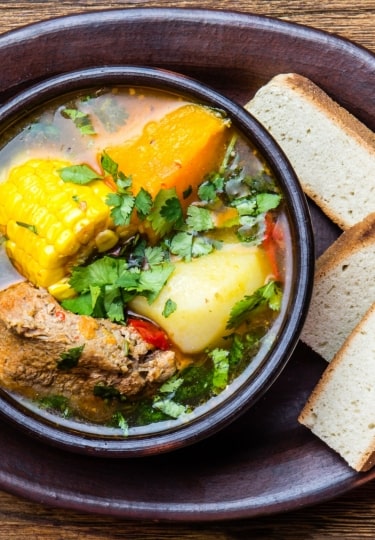Chile is over 2,600 miles long, with terrain that varies from the arid Atacama desert to icy Patagonia. This variation in climate and terrain produces an amazing range of ingredients found in Chilean food.
The long coastline is one common major influence on the country’s food. The Mediterranean climate of its Central Zone, famous for producing Chile’s notable wines, also provides the perfect conditions in which to grow many other fine ingredients.
To add to the mix, Chile also has an equally varied range of people. Pre-Hispanic cuisine was added to by the Spanish, and later, waves of immigrants from all over the world—notably Germany, and France. All have left their mark on the country’s culinary scene.
Here’s some of the very best Chilean food to try.
Empanadas
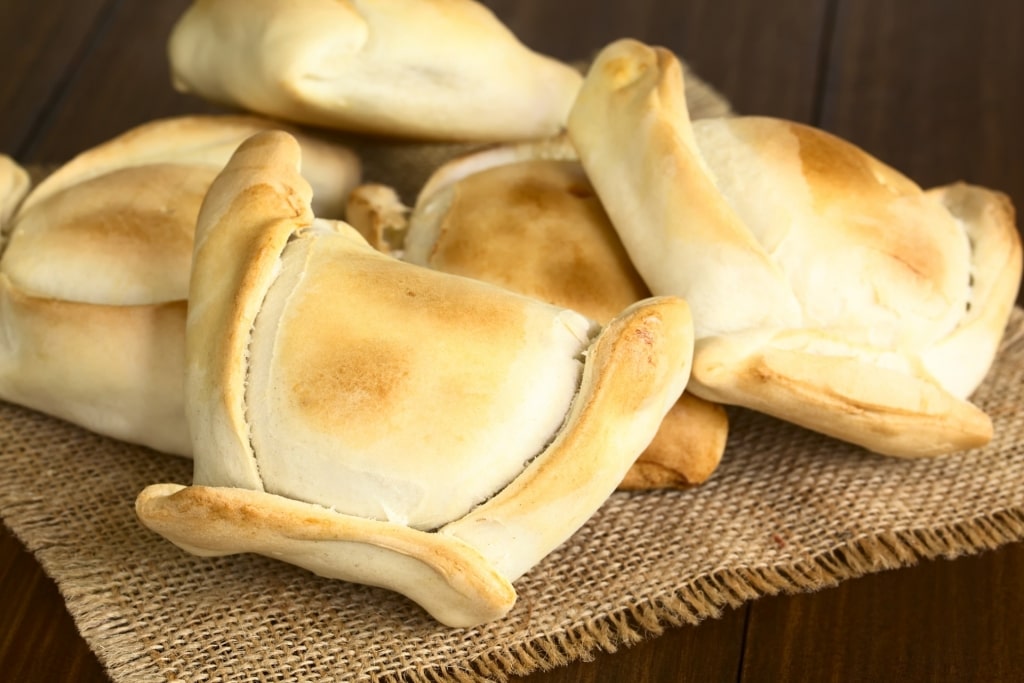
Empanadas
Empanadas—deep-fried or baked pastry parcels– are a staple of many countries in Latin America. The Chilean versions are usually baked, and also stand out for typically being square with folded edges.
Ground beef with onion is, like elsewhere in South America, the most popular filling. The meat is augmented with ingredients such as raisins, boiled egg, and black olives (watch out for the pits).
Cheese empanadas are also popular. These tend to be fried, and smaller in size.
Pebre
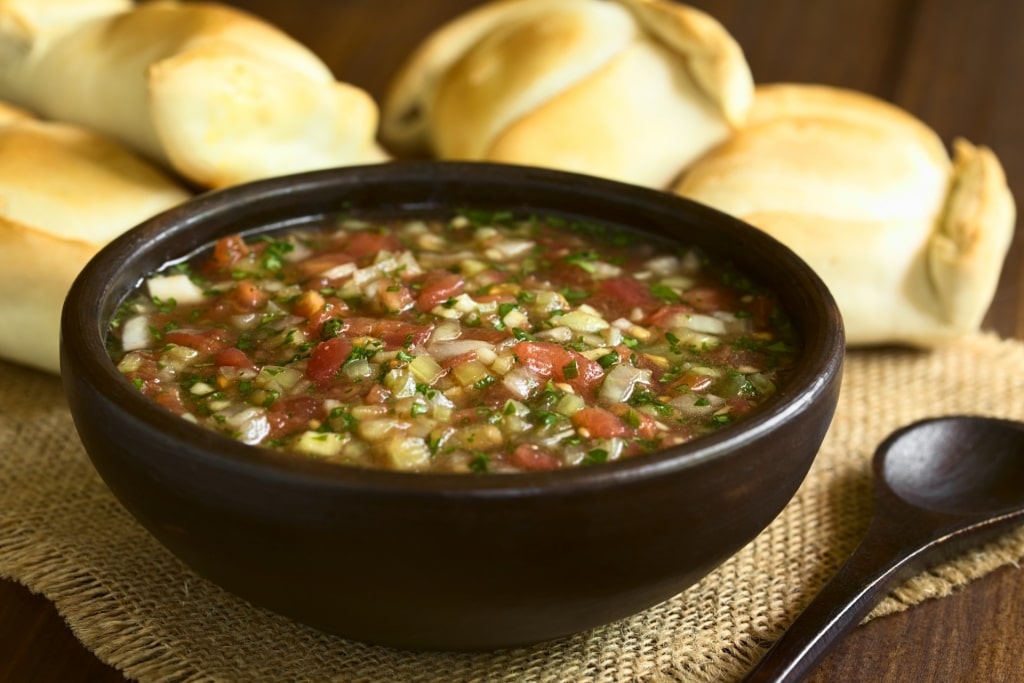
Pebre
This hot sauce pops up everywhere in Chile, whether as a dip for bread, or a dressing on meat, fish, in fact almost any Chilean food. Its base is oil, vinegar, onions, garlic, and cilantro.
Every cook will have their own variation in terms of extra herbs, and seasoning. The bite comes from chili peppers; pebre means “pepper”.
The sauce itself can be chunky or smooth, depending on how finely the ingredients are chopped. The use of a mortar and pestle gives a smooth tomato pebre the name of chancho en piedra (“pig on a stone”).
Churrasco/Chacarero
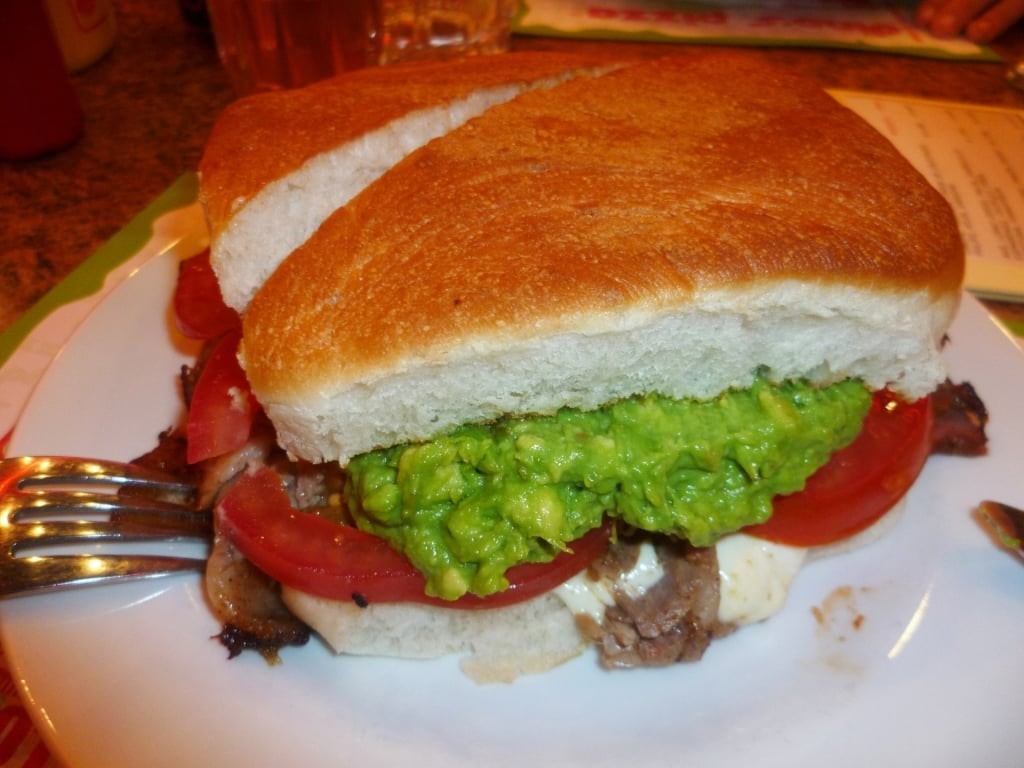
Churrasco
A churrasco is a steak sandwich, a really popular Chilean street food. It’s a thin piece of sirloin beef, grilled “a la plancha” and served in a crusty, soft bread roll.
Served with the three colors of the Italian flag—tomato, mayo, and avocado—and the sandwich becomes a churrasco Italiano. Add a fried egg, onions, and french fries for a churrasco a lo pobre (“poor man’s style”).
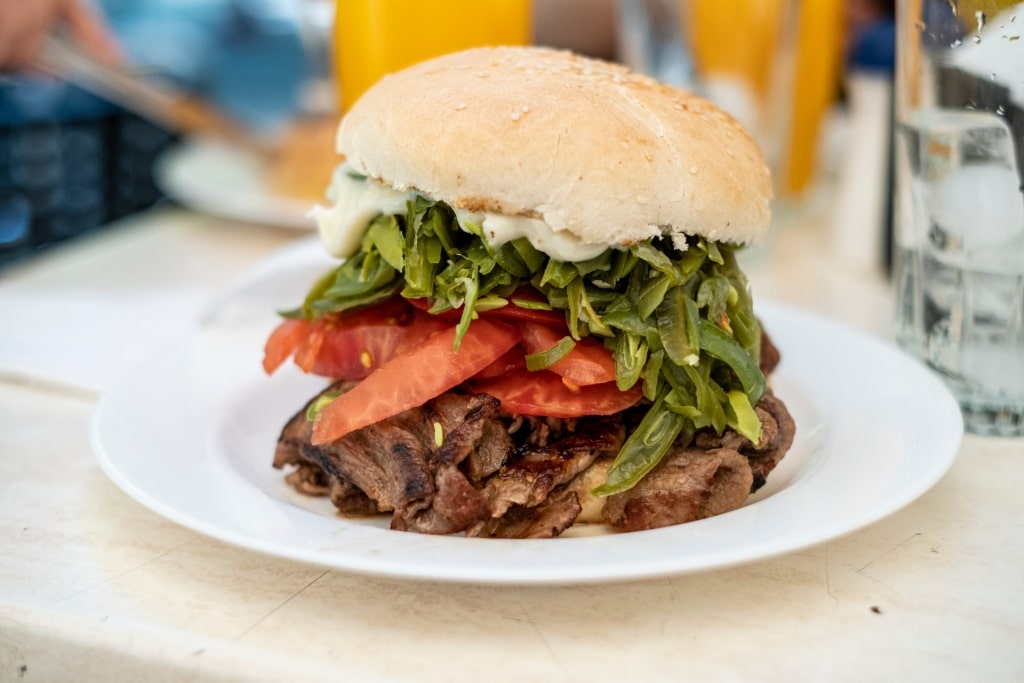
Chacarero
Santiago is famous for its own variation: the chacarero. This adds tomato, green beans (boiled, then dipped in ice water for a nice “bite”) and jalapeño peppers.
Read: Best Places to Visit in Chile
Completo
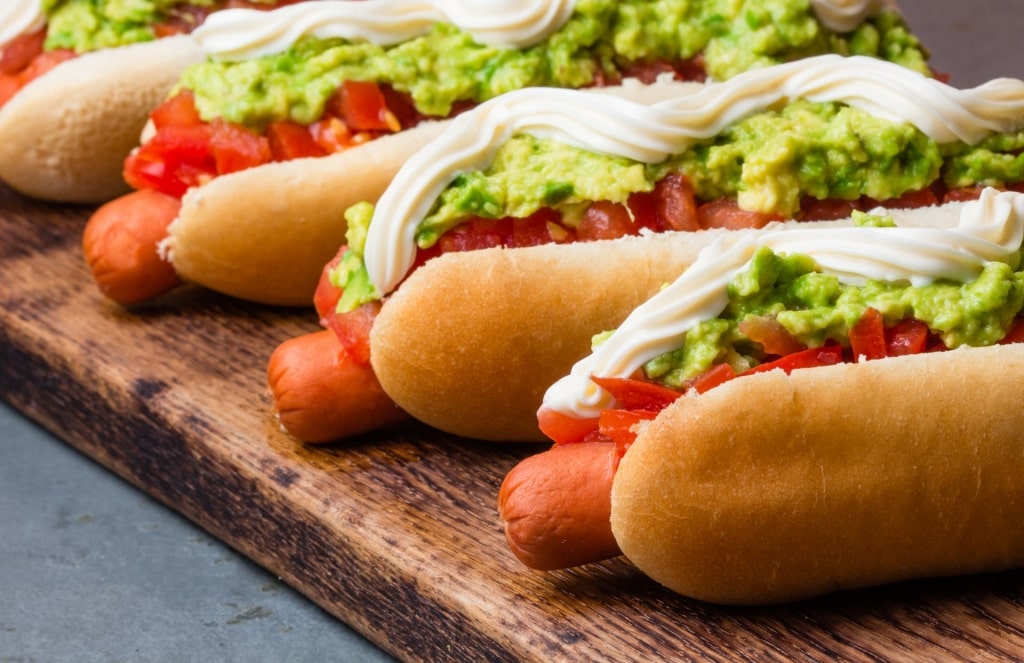
Completo
Chilean Eduardo Bahamondes introduced the hot dog to Santiago from the U.S. in the 1920s. This Chilean version, however, is much larger than the American one.
It’s just as popular a street food as it is in its original home, however. The roll is toasted, and dressings include onion, pickles, mayo, tomatoes, and sauerkraut.
The word completo means “complete” in Spanish. The idea is that one of these hot dogs should leave you completely full.
Humitas
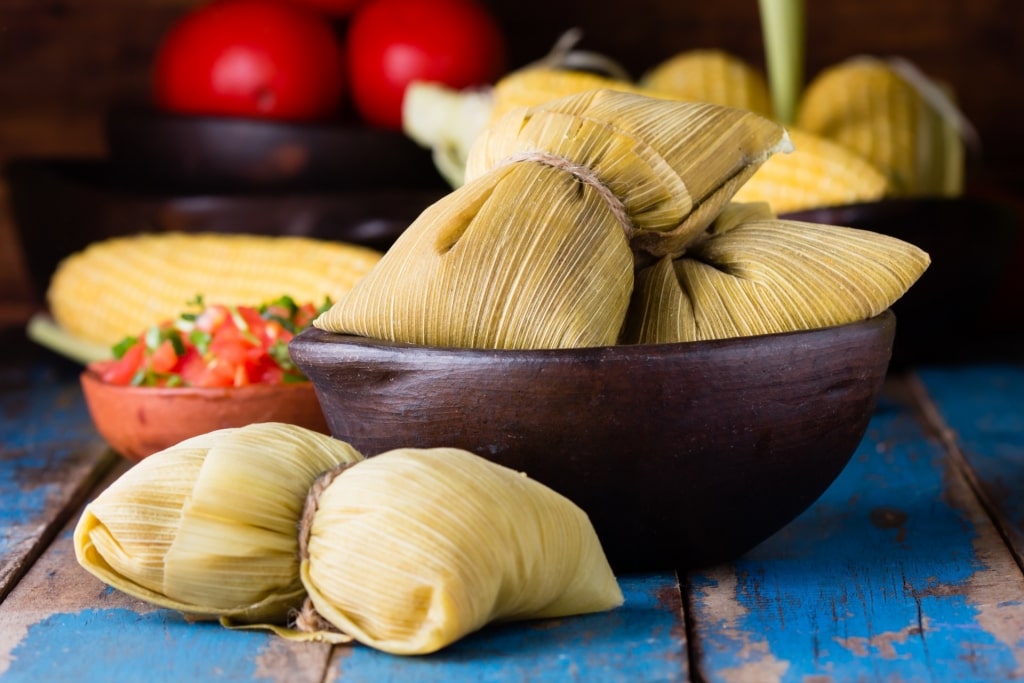
Humitas
If you’ve ever eaten Mexican tamales, you’ll know what to expect from humitas. It’s a pre-Hispanic dish of ground corn, wrapped in a corn husk, and boiled.
Humitas is often served still wrapped in string. You will unpeel the package to find that Chile’s version is much blander than the often-fiery Mexican one. Flavor comes from sides such as ensalada a la chilena (onion and tomato salad), and pebre sauce.
Chorrillana
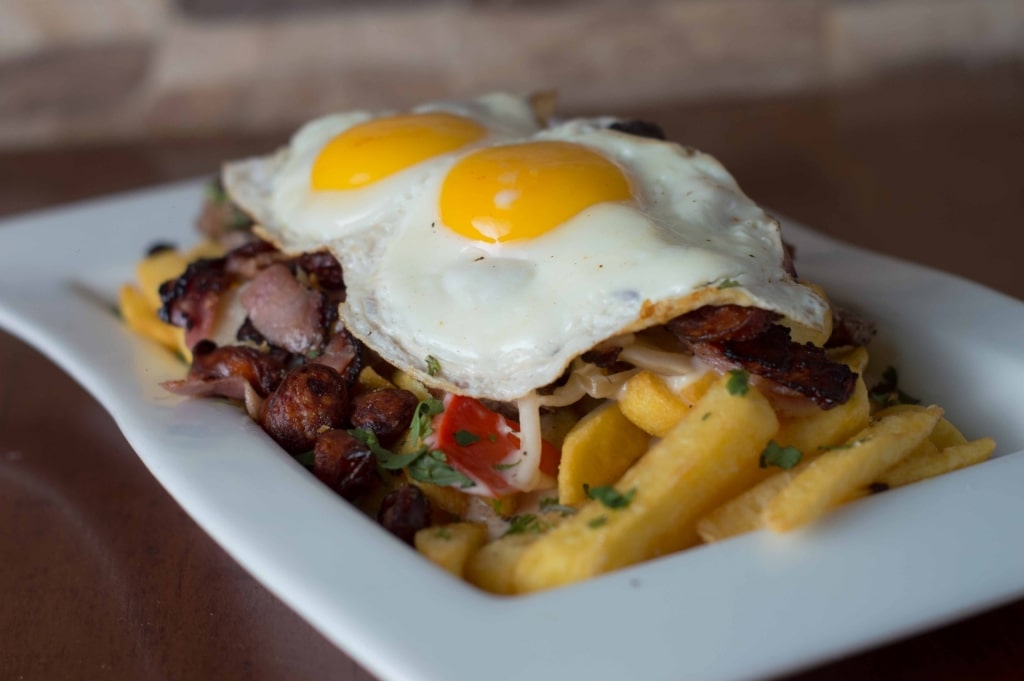
Chorrillana
Now a common bar food in Chile, chorrillana is said to have originated in the port city of Valparaiso. It’s a concoction of french fries, with sauteed onions, shredded beef and/or sausage, the whole topped with fried egg.
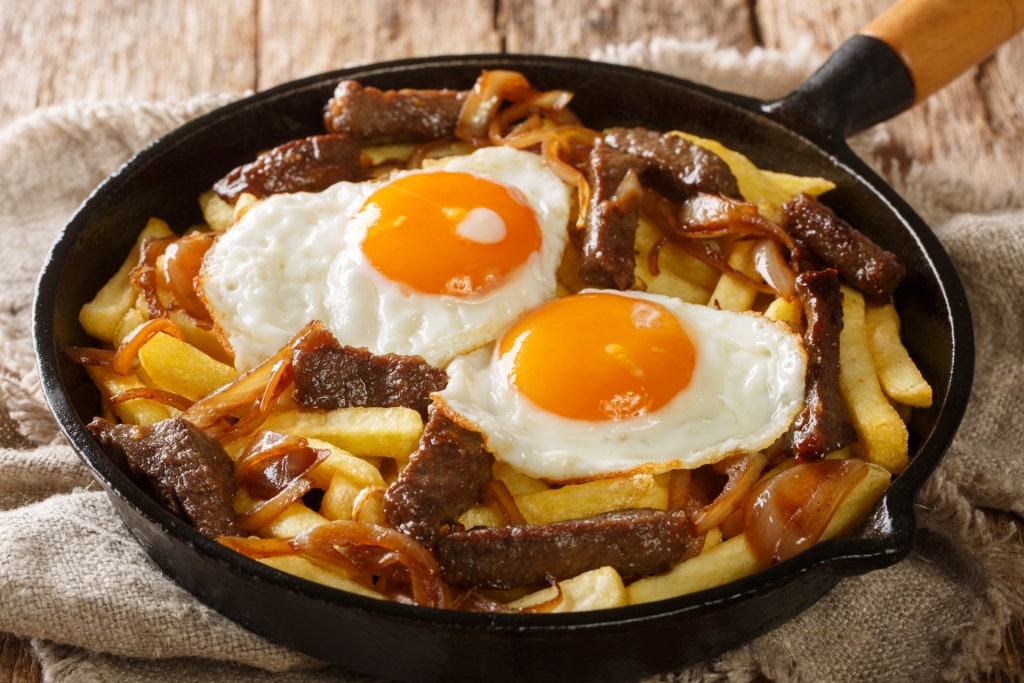
Chorrillana
It may remind you of Quebec’s heart-stopping poutine, but it’s not quite as messy as the gravy and cheese are missing. It’s just as much fun to share over a beer, though.
A generous splash of pebre is obviously essential, but ketchup and mayo are other options. Every bar has its own variations, so no two chorrillanas are really the same.
Ensalada a la Chilena
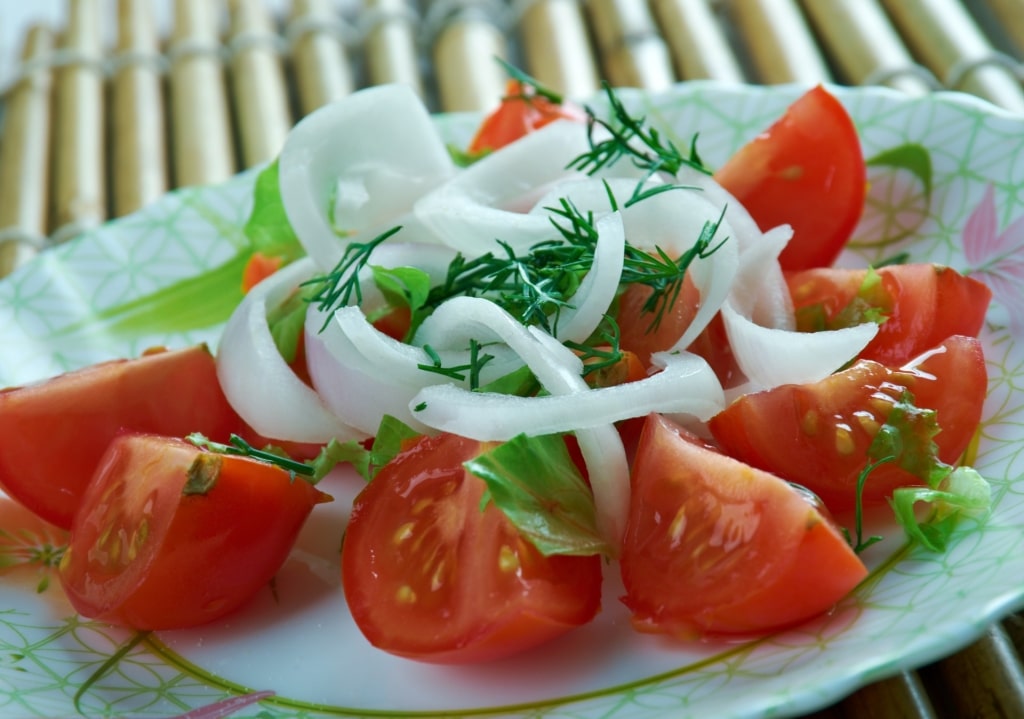
Ensalada a la Chilena
This deceptively simple salad of tomato and onion takes its name from its colors. The flag of Chile has red and white bands (along with a blue square).
The onion is sliced very finely in a style called “en pluma” (in feathers), then soaked in water to soften its harshness. The tomatoes are cut into wedges, then sprinkled with salt to really bring out their taste.
When combined, no dressing is added other than a sprinkling of cilantro, or parsley. One version known as “nortina” does add cheese, hot peppers, and black olives.
Pastel de Choclo
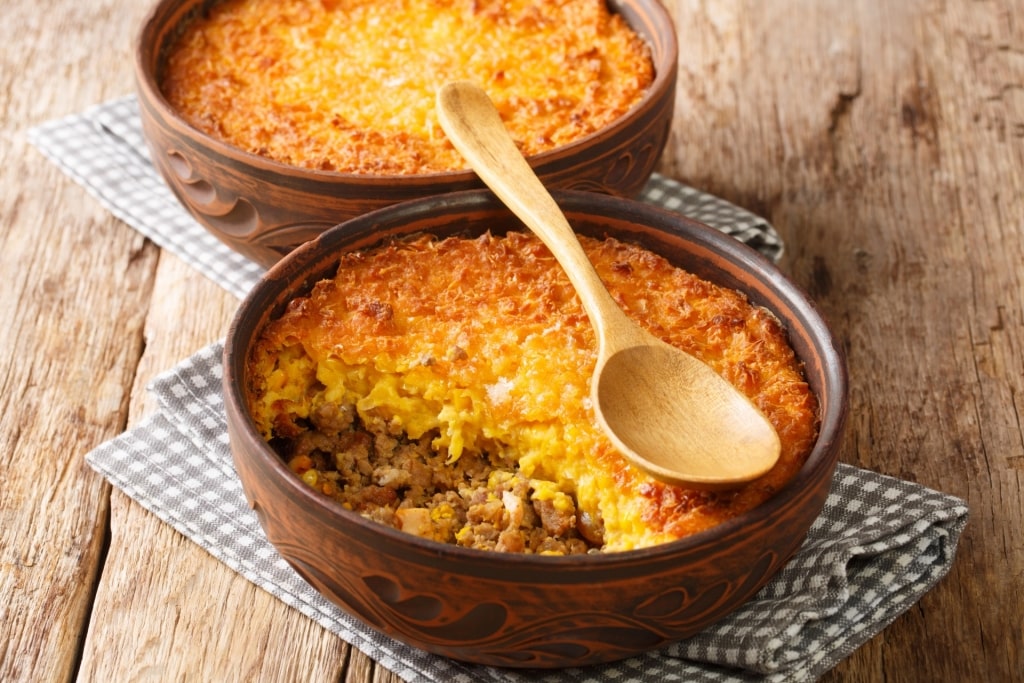
Pastel de Choclo
This may sound to the unwary as if it’s a chocolate pastry. In fact, it’s a delicious meat pie topped with a corn pastry lid.
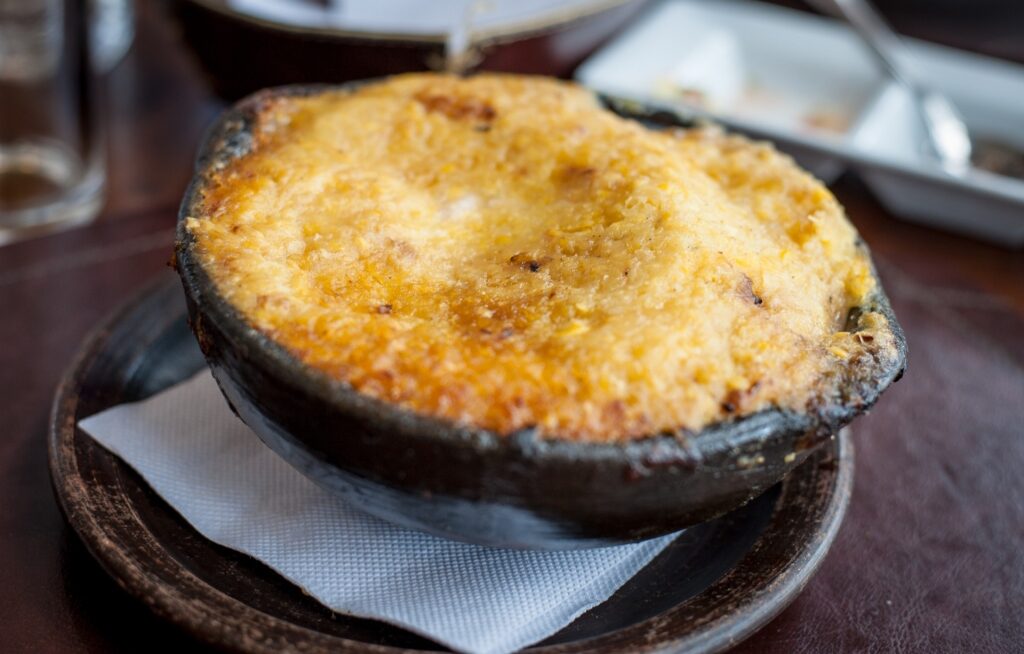
Pastel de Choclo
“Choclo” is corn (maize), a staple of South American cuisine, but more specifically the seasonal tender new corn. It’s pounded into a flour, then mixed with butter and basil, layered over a casserole, and baked.
The casserole itself contains “pino”, a mix of ground beef, hard-boiled eggs, onion, garlic, onion, and olives. Yes, basically the same filling as for empanadas.
Cazuela
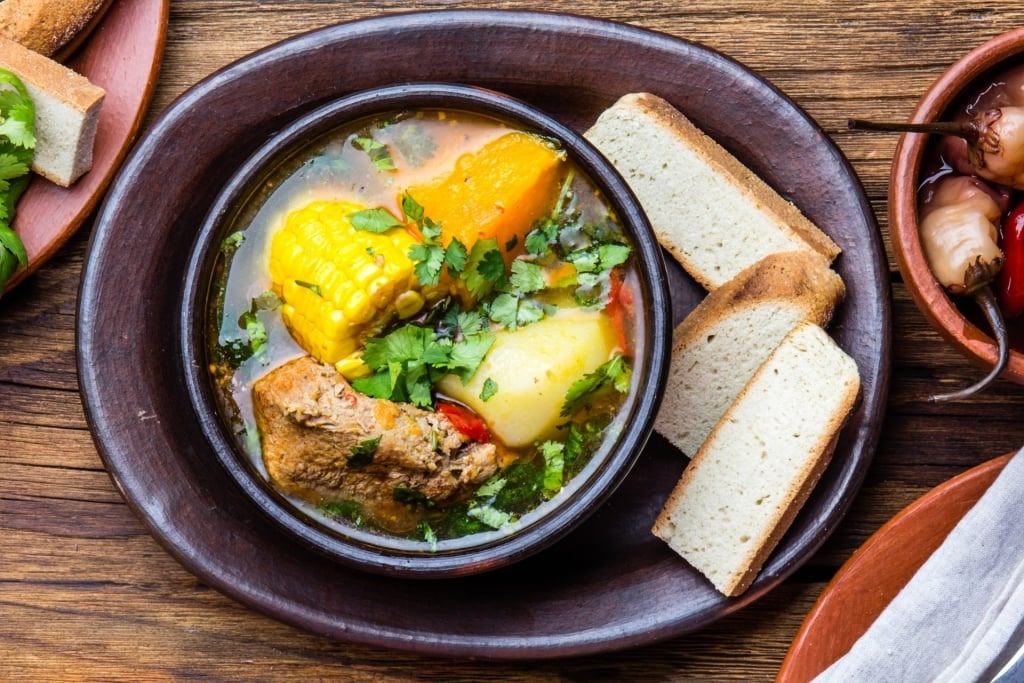
Cazuela
This soup is made with chicken, beef or lamb, and you may also find squash, corn cob or potatoes in it. It’s as hearty as it sounds, a good, warming dish, flavored with peppers, chili, and corn.
Made with chicken, it’s called cazuela de ave and is Chile’s national dish. The “proper” way to eat any version is to drink the soup first, then eat up the rest.
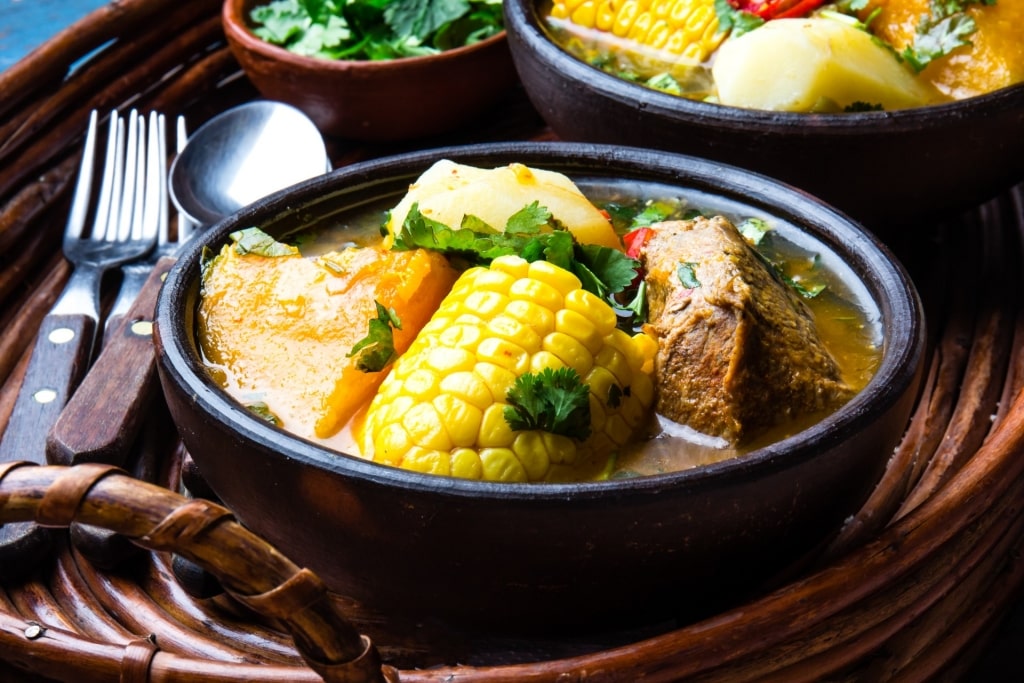
Cazuela
Cazuela takes its name from the bowl it is traditionally cooked in. A cazuela is a shallow, unglazed, earthenware pot.
Read: Best Things to Do in Chile
Chupe
This chowder-style stew is one of the tastiest Chilean dishes, especially if you like seafood. It’s based on shrimp, cooked with corn, onion, and other vegetables.
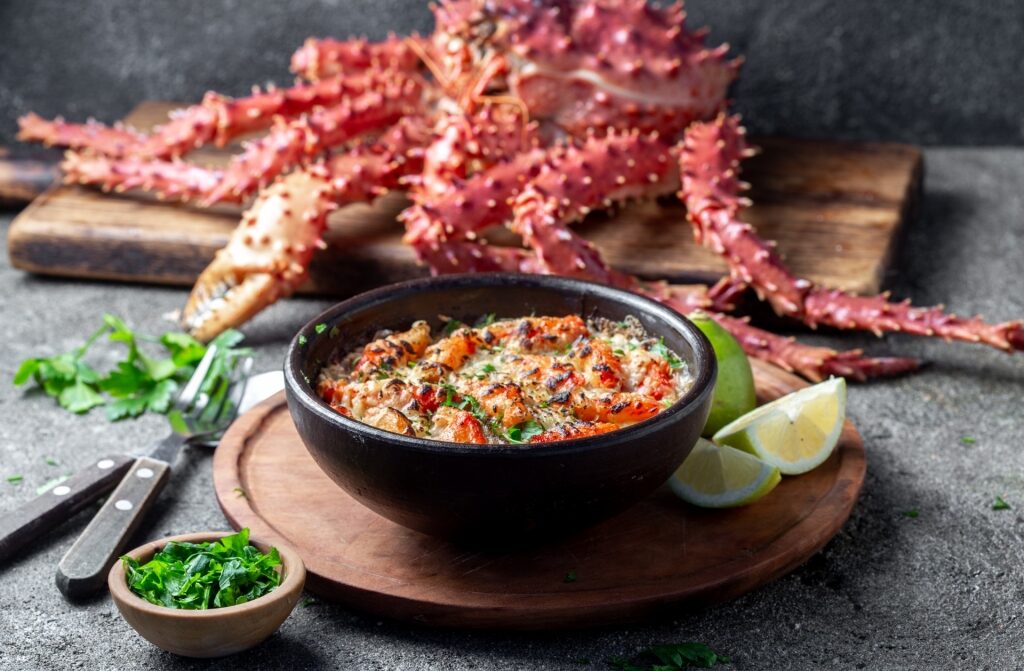
Chupe
Milk is added at the end to give an added creamy flavor. While shrimp is the usual base, any available seafood—such as crab or fish—can be used instead, or as well.
An earthenware bowl is the traditional serving dish, as it helps keep everything warm. Fresh bread for soaking up the soup is also a given.
Pollo Arvejado
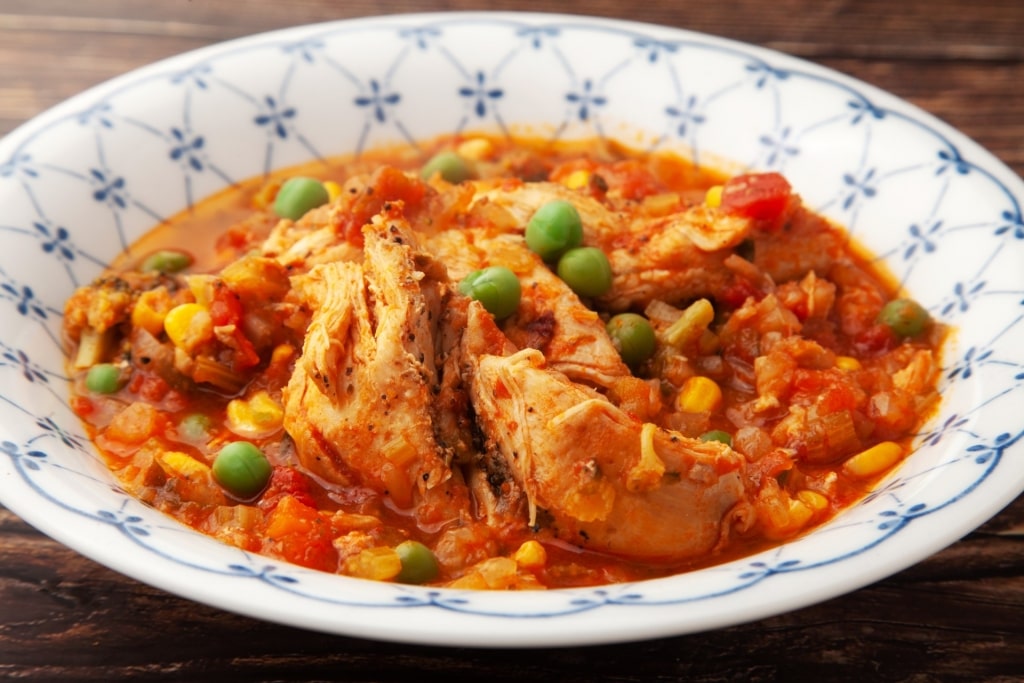
Pollo arvejado
This hearty chicken stew is served along with boiled potato, french fries, or rice. It’s a cheap, tasty, and colorful meal for any family.
The chicken is fried to brown it, then chicken stock is added, along with onions, garlic, carrots, and green peppers. White wine is often in the stock for extra flavor.
Like any chicken dish, much of the taste will come from seasoning and herbs, such as bay leaves, or paprika. Other ingredients will depend on the cook and the region.
Centolla
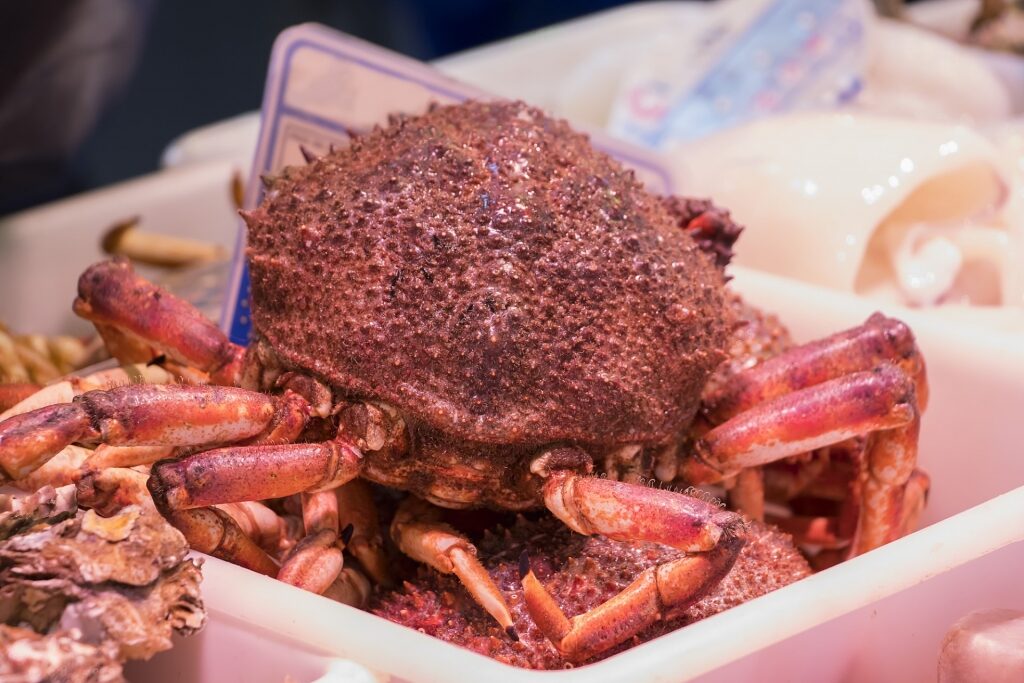
Centolla
Centolla (king crab) comes from the icy waters of southern Chile around Tierra del Fuego. It’s considered sweeter and meatier than the famous Alaskan king crab.
Of course, only a taste test can confirm that. You’ll ideally want to be in Chile between July and November for the fresh catch, but frozen crab is now available year-round.
The spiny shell makes processing the crab difficult, hence the exclusive nature of this dish. Once cooked in boiling stock, a crisp white Chilean wine is all the centolla then really needs.
Ajiaco
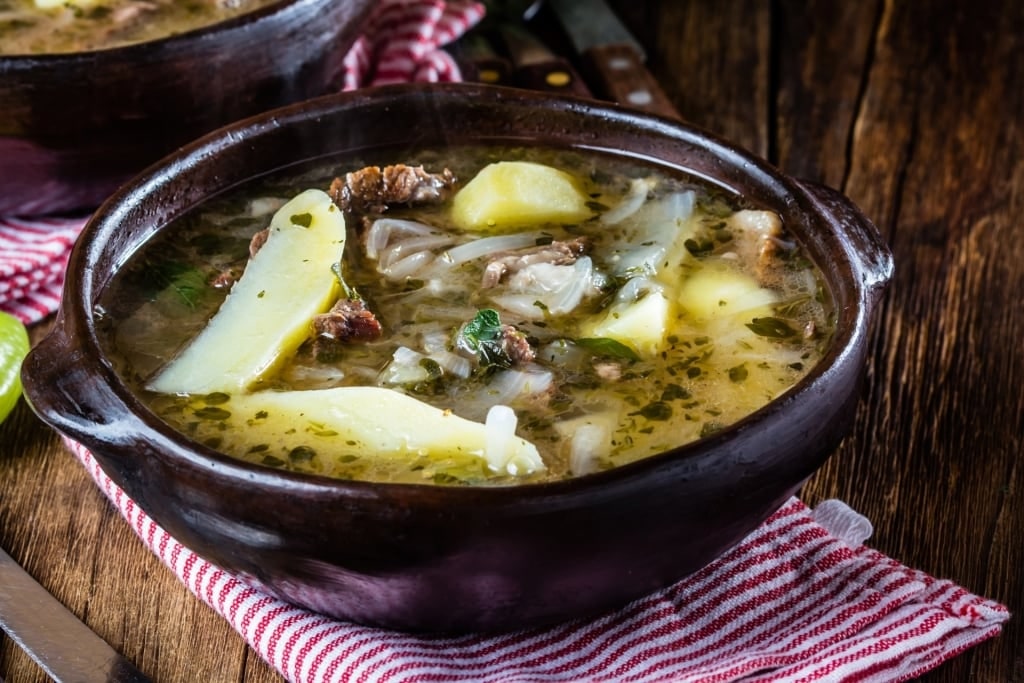
Ajiaco
If you are ever at a Chilean asado, or barbecue, and see the staggering amount of meat being grilled, you may wonder what happens to any left-overs. One answer is ajiaco, a stew that is, perhaps not coincidentally, seen as a hangover cure.
The meat is chopped up, then stewed with vegetables such as onions, green chili peppers, and potatoes. Add salt, pepper, and herbs, and pour over sliced hard-boiled egg.
Curanto
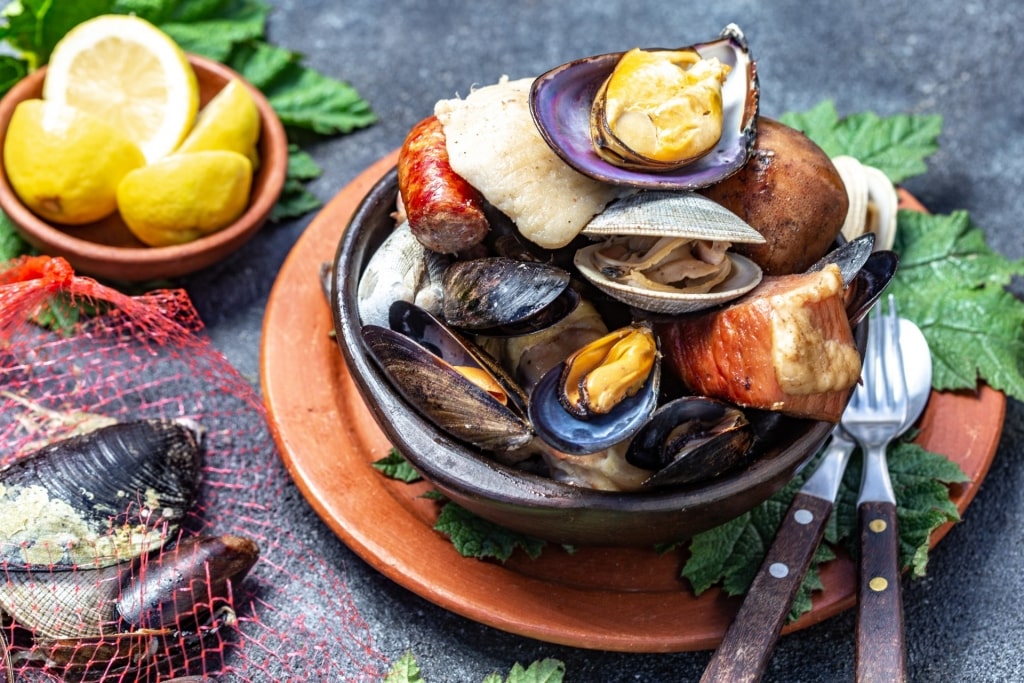
Curanto
This Chilean vision of a clambake is a traditional cooking method in the Chiloé archipelago, in the Lake District of southern Chile. One curanto pit has been dated as 6,000 years old, so this is almost certainly the oldest Chilean food style.
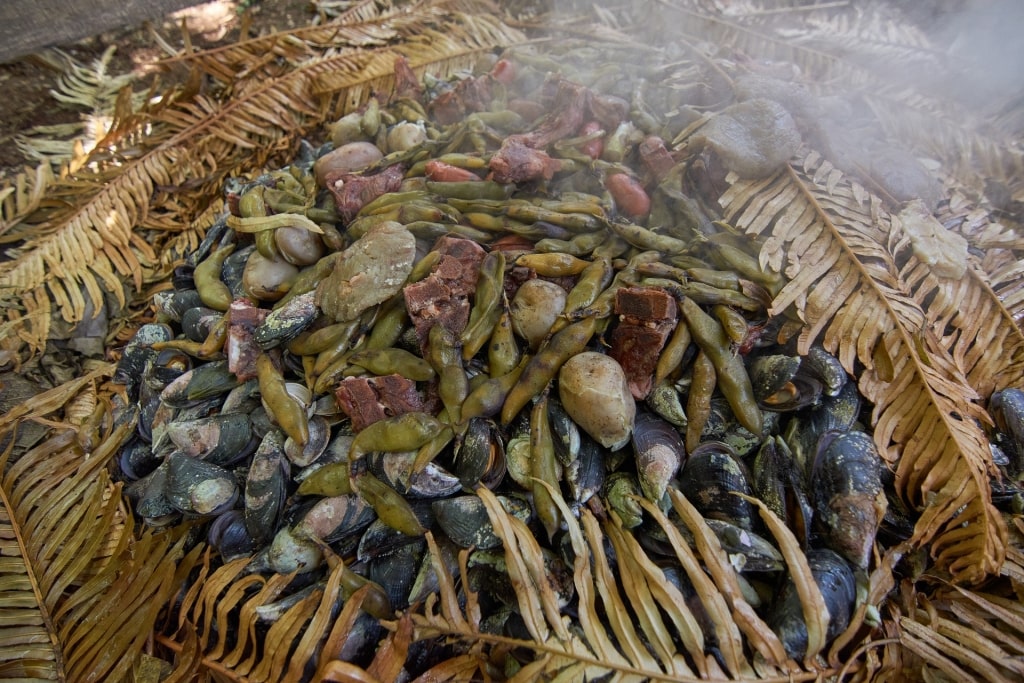
Curanto
Curanto (“stony ground”) refers to the cooking method, rather than any ingredients. It’s a hole about five feet deep, lined with stones, which are then heated by a large fire.
The resulting oven is filled with food, anything from seafood to vegetables, and covered with green leaves and clay. The food is simultaneously cooked and steamed, preserving all its flavors.
Porotos Granados
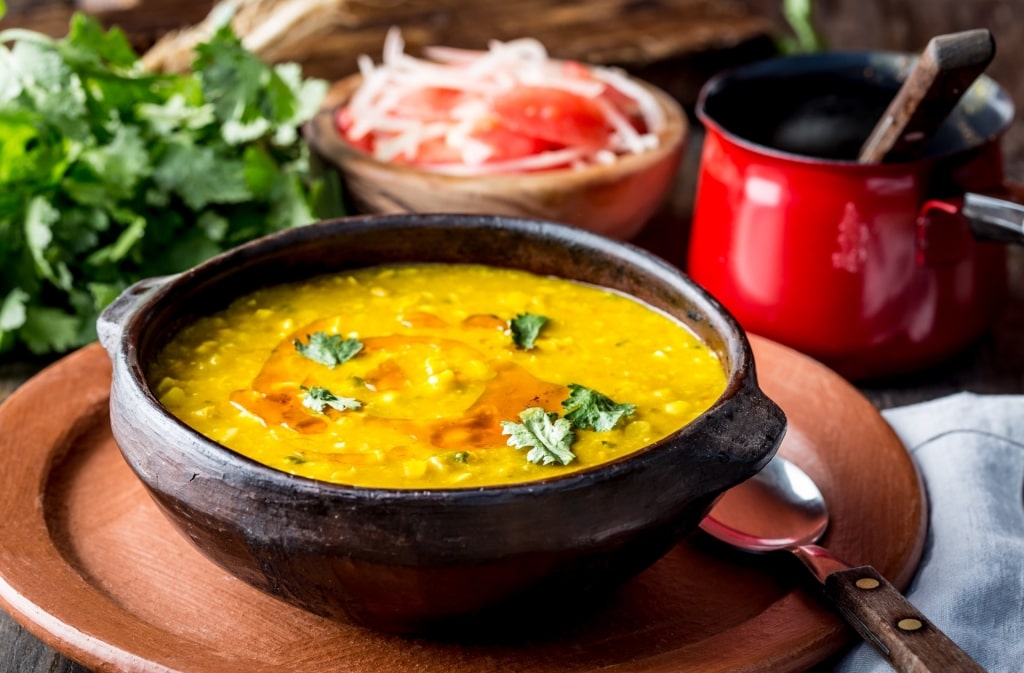
Porotos granados
Vegetarians will appreciate this stew of white cranberry beans, ground corn and other vegetables. That is, if it hasn’t been made with chicken stock (which it shouldn’t be for authenticity).
It’s a popular seasonal dish, made in summer when the new corn and beans are harvested, but can also be found year-round. Its name comes from “purutu”, the Quechua word for bean.
Porotos granados is traditionally served with ensalada a la chilena. A generous dash of pebre also adds rich flavor.
Machas a la Parmesana
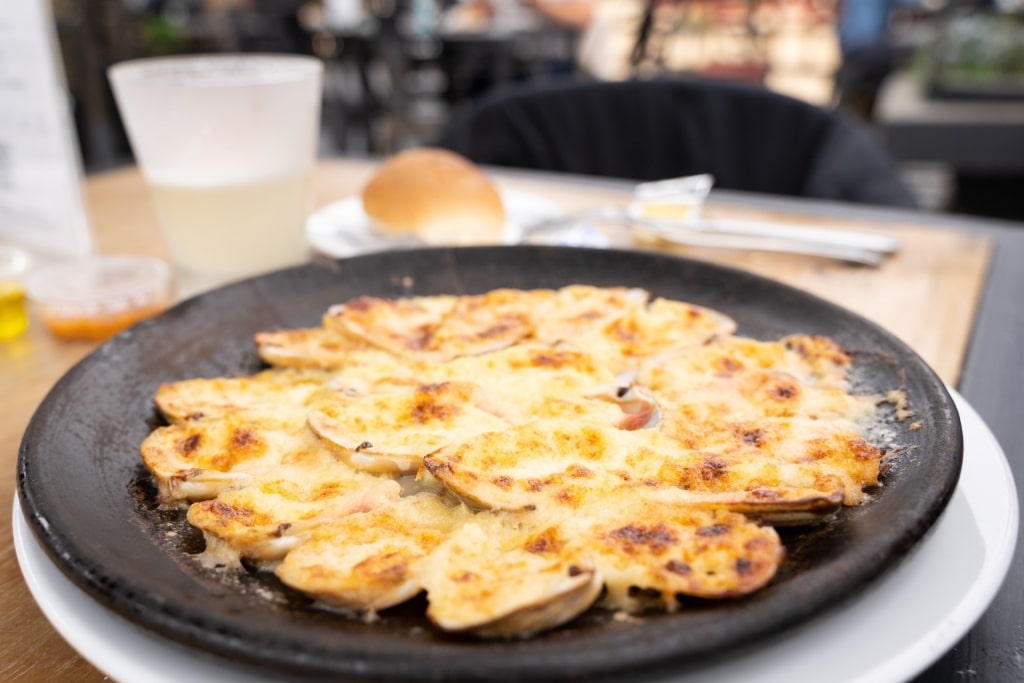
Machas a la parmesana
The parmesan is a clue that this is an Italian import, created by immigrant chef Edoardo Ferrari in the 1950s. It’s a dish of saltwater razor clams baked in the half-shell.
A dash of white wine (or lemon), garlic, and cream is added. The whole is then topped with cheese before being cooked.
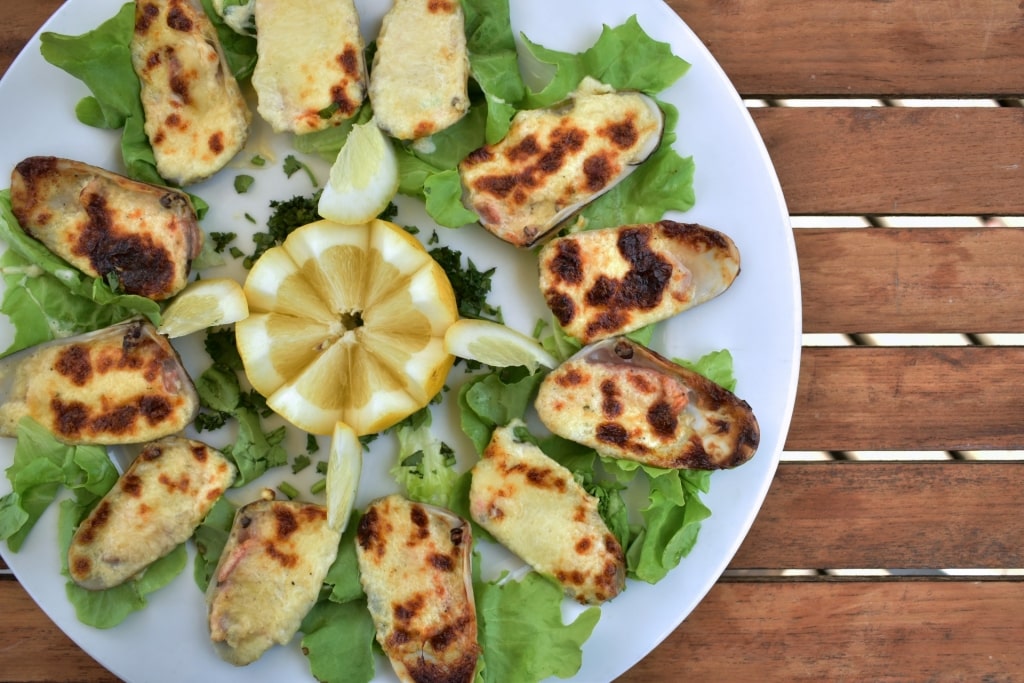
Machas a la parmesana
While parmesan was in the original recipe, it is now often prepared with Chilean mantecoso cheese. The dish is a popular appetizer, perfect with a crisp local white wine.
Read: Best Countries in South America to Visit
Arrollado de Huaso
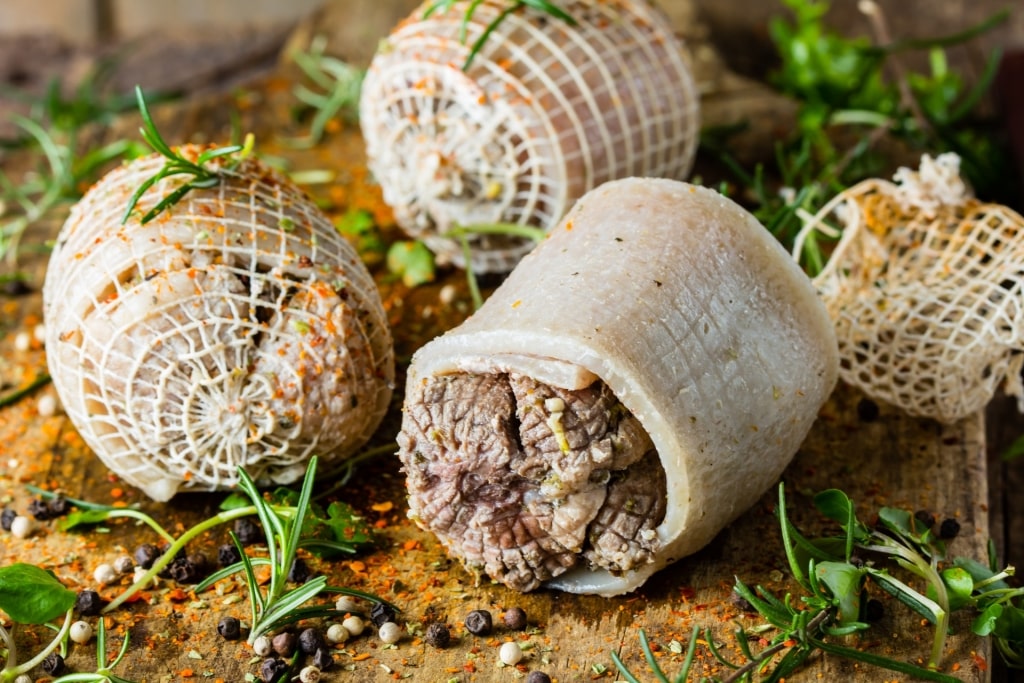
Arrollado de huaso
This “peasant roll” comes from southern Chile, where pigs are widely kept by poorer farmers. It’s a dish that—like any sausage—originally made use of cheaper cuts.
Chopped pork pieces are mixed with bacon, chili and spices such as cumin, then rolled in pork skin. Boiled in broth, it is then served with the ubiquitous chili pepper sauce, pebre.
A generous slice is cut so that the filling doesn’t fall apart. A typical side would be avocado salsa, usually with french fries.
Charquicán

Charquicán
A dish that once might have used dried llama meat, charquicán is now thought of as a beef stew. “Charqui” means jerky—dried meat—in the indigenous Quechua language.
Ground beef, or beef jerky, is slow-cooked with ingredients such as potato, squash, white corn, and onion. Seasonal ingredients such as peas or pumpkin may also be added.
Charquicán is often topped with a fried egg. You’ll find a similar dish in Argentina, Peru, and Bolivia.
Sopaipilla
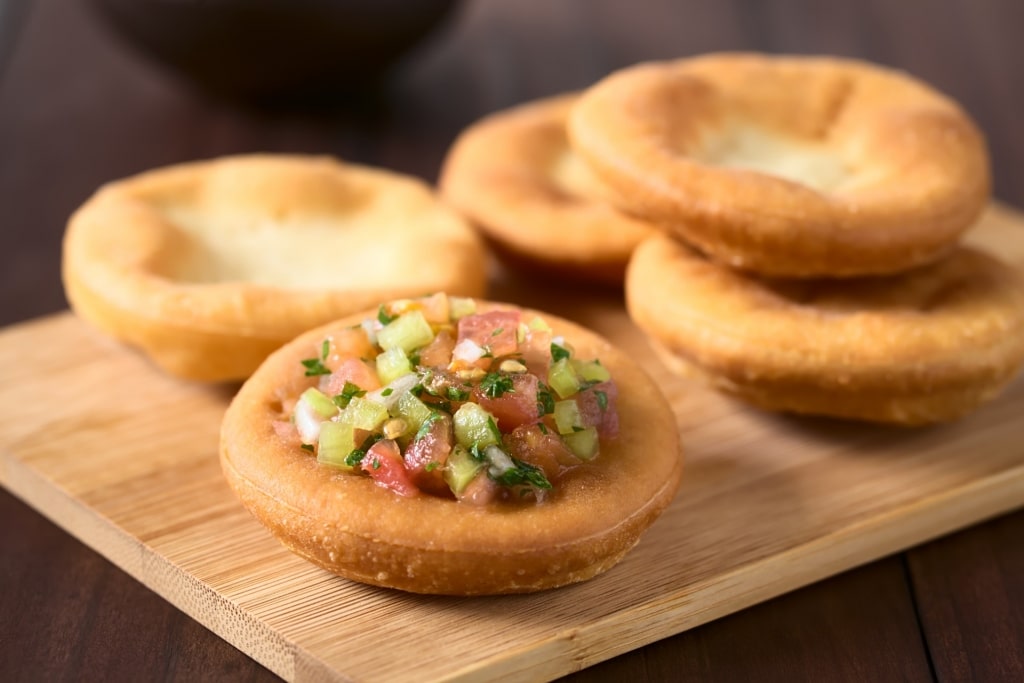
Sopaipilla
This sweet pastry is made by deep-frying dough made from leavened wheat flour. The resulting light, crisp disks are doused in sugar, warm honey, or both.
The traditional sugar topping is chancaca, made from pure cane sugar. The syrup is often flavored with orange or cinnamon.
Savory versions are eaten with a hot sauce dip, or as a bread with avocado or cheese. You may also find pumpkin added to the flour in parts of Chile.
Manjar Blanco
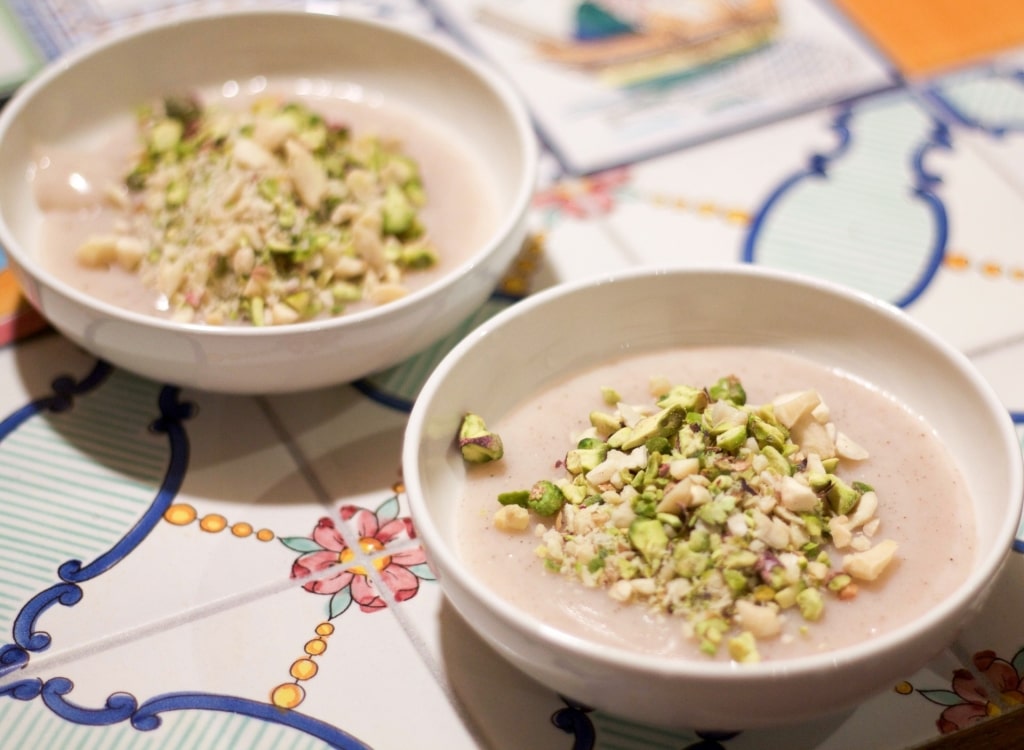
Manjar blanco
In Spain, manjar blanco refers to the dessert known as blancmange in English. Milk-based, that variety is thickened with gelatine.
In Chile (also Peru, and Colombia), manjar blanco is a soft spread made by slowly boiling and thickening milk. It’s a similar process to the more famous dulce de leche (invented in Chile), but gentler cooking gives a white rather than brown paste.
This sweet cream can be used as a spread on bread or toast. More commonly, it is a filler in pastries, and alfajores (cookies).
Pan de Pascua
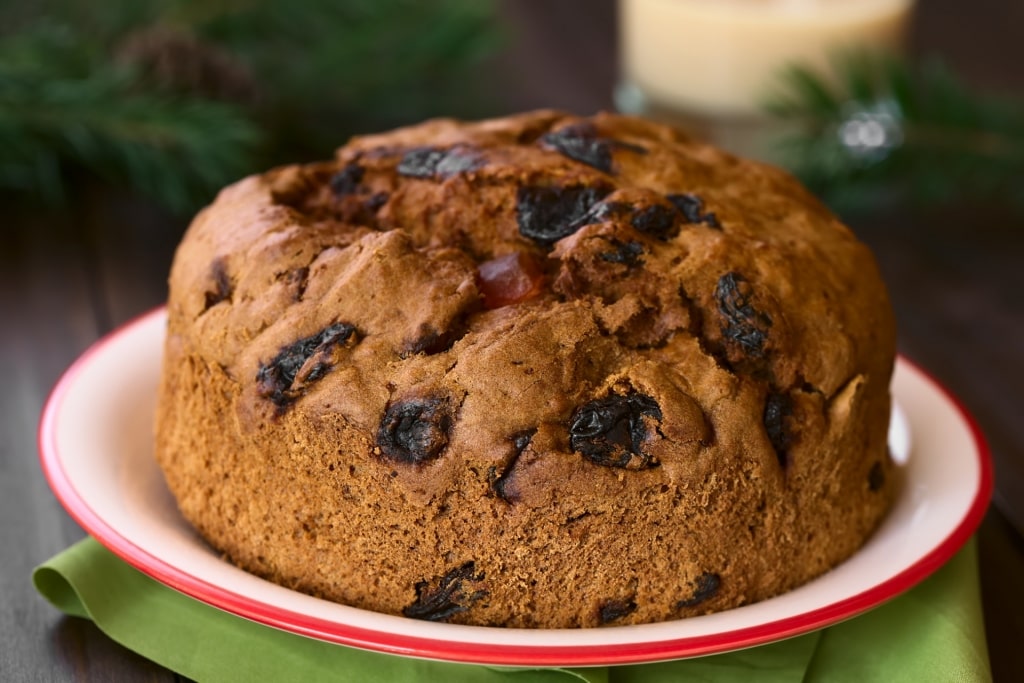
Pan de pascua
Once made only at Christmas, this fruitcake is now available all year round. Its roots lie with the stollen of German immigrants, or the Italian panettone, and it’s similarly rich in dried fruits, nuts and spices.
The name is doubly misleading in that it’s a cake, not a bread. In Chile, “pascua” also refers to Christmas and not just Easter.
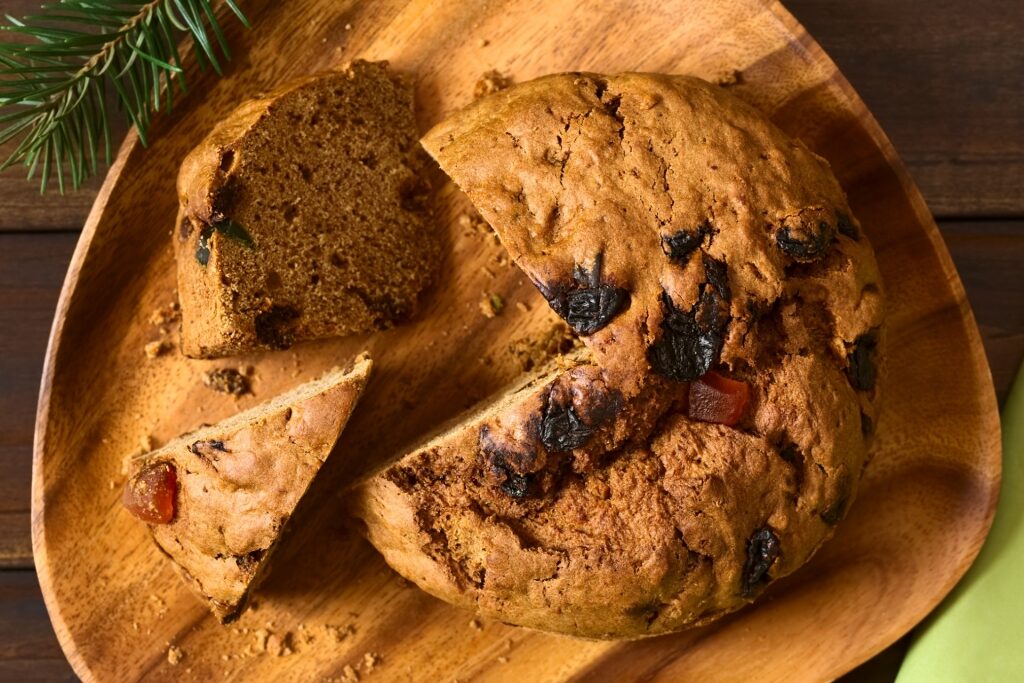
Pan de pascua
During Christmas, pan de pascua is traditionally enjoyed with a glass of cola de mono, a drink roughly equivalent to eggnog. Be carefully, as the cake itself might also then be doused in brandy, rum, or Chile’s famous pisco.
Has this list of delicious Chilean food whetted your appetite for more? Then browse our vacation itineraries to find the perfect cruise to Chile—and start a culinary journey around this amazing country.
